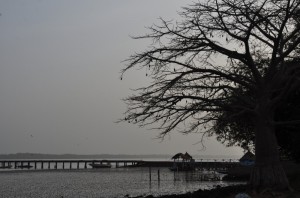 The Gambia along the Gambia River is the smallest country on the continent with an area of 11,300 square kilometres and a population of 2 million. The entire country is almost entirely enclosed by Senegal. For bird-watchers, The Gambia is a veritable paradise. Most visitors go for the beaches and bars of the Atlantic coast. Our truck followed the main road south of the river and we spent two nights at the Tendaba Camp. My visit to the Baobolong Wetland Reserve is the highlight of my 3-day stay in the Gambia.
The Gambia along the Gambia River is the smallest country on the continent with an area of 11,300 square kilometres and a population of 2 million. The entire country is almost entirely enclosed by Senegal. For bird-watchers, The Gambia is a veritable paradise. Most visitors go for the beaches and bars of the Atlantic coast. Our truck followed the main road south of the river and we spent two nights at the Tendaba Camp. My visit to the Baobolong Wetland Reserve is the highlight of my 3-day stay in the Gambia.
Background
The Gambia has been totally unknown to me before my West African adventure. The shape and position of this tiny nation epitomise the absurdity of the colonial carve-up of Africa!
The area has been inhabited for thousands of years as evidenced by the presence of groups of ancient stone circles (which are essentially burial mounds) in eastern Gambia. By the 13th century, the area was part of the Empire of Mali. A group of Malinke from Mali came and settled in the area. Portuguese explorers arrived in 1455. Given its strategic importance at the mouth of the Gambia River, the European powers and traders were keen to establish their foothold in the area.
By mid-17th century, the British established Fort James on an island 25km upstream from the mouth of the river. In 1783, Britain gained all rights to trade on the Gambia River and Fort James became a major slave shipment point. The Gambia River Protectorate was administered from Sierra Leone until 1888 when Gambia became a full colony. Britain tried to trade Gambia for other colonial territories but no one was interested.
The political landscape was hardly developed in Gambia when African colonies yearned for independence. Britain doubted that an independent Gambia given its small size and lack of resources could become economically self-sustaining. In any case, Gambia became independent in 1965 with David Jawara who founded the People’s Progressive Party as the prime minister and Queen Elisabeth II remained titular head of state.
In 1970, Gambia became a fully independent republic with Jawara as president. Disaffected soldiers staged the first coup in the country in 1980. Gambia and Senegal formed Senegambia Confederation briefly in 1982 but it was dissolved in 1989. In April 1994, President Jawara was overthrown in a coup lead by a 29-year-old Lieutenant Yahya Jammeh who has been in power since. Jammeh has become more authoritarian over the years with freedoms being clamped down. But The Gambia remains relatively stable in the seas of instability.
The main ethnic groups are the Mankinka (over 40%), the Fula (18%) and the Wolog (16%). About 90% of the population is Muslim. The economy is small with a GDP (2009) at US$789 with a GDP per capita of US$517.
Day 62 (Tuesday, March 6): Niokolo-Koba National Park – Tambacounda – Basse, The Gambia (170km; 6hrs)
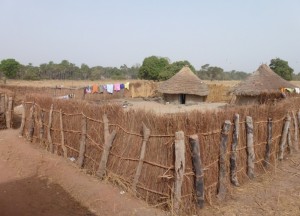 We set off at 7:30am and arrived at Tambacounda before 11am. We had two hours free time as Mike and Ant had to take the truck for rechecking and getting other errands done. I went to the pharmacy to get two drugs for my cold and cough which the doctor prescribed to me three days ago.
We set off at 7:30am and arrived at Tambacounda before 11am. We had two hours free time as Mike and Ant had to take the truck for rechecking and getting other errands done. I went to the pharmacy to get two drugs for my cold and cough which the doctor prescribed to me three days ago.
We had our lunch and hit the road again after 1pm. After an hour’s drive, the clutch had problems and Mike and Ant took another hour to fix this minor problem. It was grilling hot. The truck was moving steadily again. Then around 5:15pm, we arrived at the border and Mike had our passports stamped for exit.
With an EU passport, I thought I did not need a visa for The Gambia. I was wrong. While citizens of some EU countries including Germany, Sweden and the UK do not require a visa, others do. The immigration officer at the border allowed me to enter first and to apply for a visa the following day in Basse.
Day 63: Basse –Tendaba (300km; 5 hrs)
The group had an hour in Basse so that I could get a visa. The visa fee is 1000 Gambian dalasi and it is fortunate to find a money changer on the main street. I changed US$40 and got 1200 dalasi. I told the immigration officer, who is polite and helpful, that I did not mind paying for a visa, but I wished his country could institute a simpler system i.e. to issue a visa at the border as Togo is doing.
We drove on the south side of the Gambian River and the road is mostly paved. We arrived at the Tendaba Camp after 3pm. This camp established since 1974 provides hut accommodation with shower and toilet and changes more for those setting up their own tents. As a result Mike arranged us to stay in huts and I also had a swim in the swimming pool.
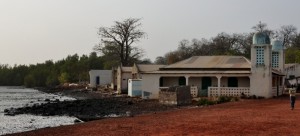 |
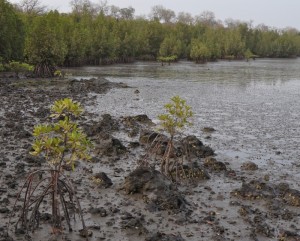 |
The camp is next to the river opposite the Baobolong Wetland reserve, a Ramsar-designated wetland. The tide was going out quickly. We sat by the river with a cool beer in hand and had a chat till 10pm. I took the opportunity to find a tailor in the village and ordered four items made (including a top and a dress) for some 21 euros.
Day 64: Tendaba – Baolong Wetland Reserve – Tendaba
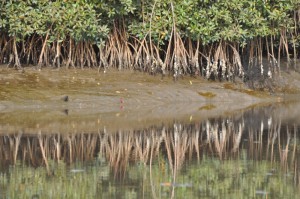 |
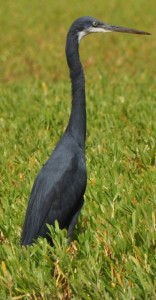 |
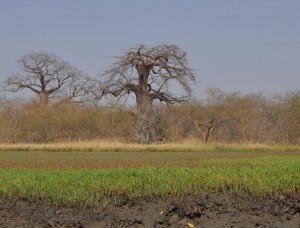 |
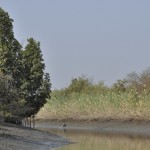 Nicole, Barry, Angelito and I set off at 8am for a 3-hour pirogue trip to the Baobolong Wetland Reserve. We first crossed the wide river and then went through many narrow channels. The mangroves are abundant and the expansive wetland looks green, lush and impressive. Nicole and Barry both armed with their books and binoculars together with our guide identified some 30 species of birds including black kite, cormorant, darter, fish eagle, egret, grey-headed gull, hammerokp, heron (grey & reef heron), red-billed hornbill, kingfisher (pied kingfisher, blue-crested kingfisher and malakite kingfisher), pelican, roller, sandpiper, long-tailor starling, tern (caspian tern & sandwich tern), vulture, whrimbel etc.
Nicole, Barry, Angelito and I set off at 8am for a 3-hour pirogue trip to the Baobolong Wetland Reserve. We first crossed the wide river and then went through many narrow channels. The mangroves are abundant and the expansive wetland looks green, lush and impressive. Nicole and Barry both armed with their books and binoculars together with our guide identified some 30 species of birds including black kite, cormorant, darter, fish eagle, egret, grey-headed gull, hammerokp, heron (grey & reef heron), red-billed hornbill, kingfisher (pied kingfisher, blue-crested kingfisher and malakite kingfisher), pelican, roller, sandpiper, long-tailor starling, tern (caspian tern & sandwich tern), vulture, whrimbel etc.
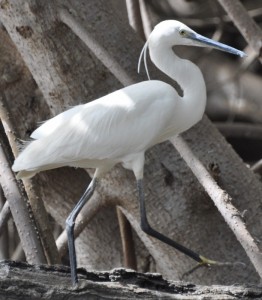 |
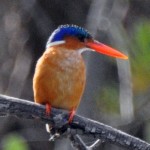 |
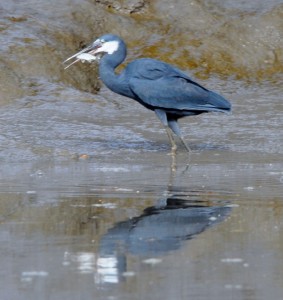 |
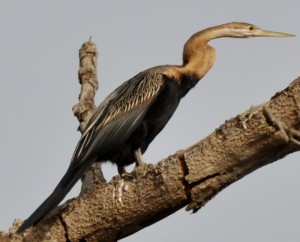 |
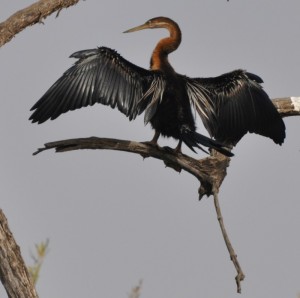 |
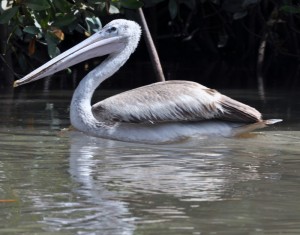 |
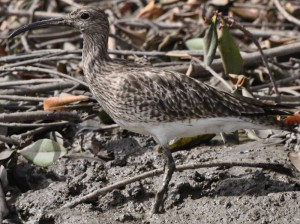 |
At 5pm, I joined others on another bird-watching walking tour. This time, the guide is excellent but the setting is ordinary. We walked in a garden and a common field in a village. He identified another 30 types of birds (most of which are smaller). It was hot and the guide spoke with an accent that I could not hear well. Though I do not find the walk interesting, I am happy to participate thus making a contribution to the village development.
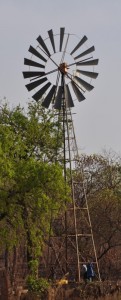 |
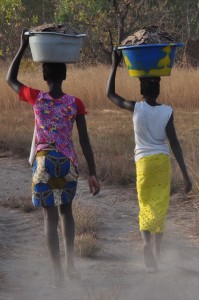 |
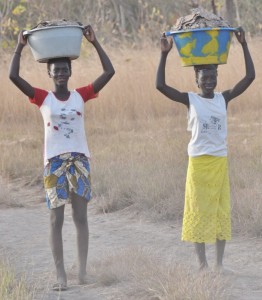 |
We had a nice dinner with wild pig and chicken prepared in a local sauce. I was hungry and really enjoyed my meal! I picked up my clothes but had to ask the tailor to re-do two of them. I had to wait till 10:30pm to get them back. As the tailor had been working hard, I gave him 24 euros instead and hope he could make a good living for his family of five.
Day 65 (Friday, March 9): Tendaba– Farafenni, the Gambia (about 30km to the border) – to St Louis (about 450km) – 11hrs of driving
We had the longest driving day of the entire trip. We got up at 5am with breakfast at 5:30am. It took a while to settle our bills. We finally set off at 6:45am and arrived at the ferry pier before 7:30am. But we had to drive back to a nearby village to pay for the crossing. They weighted our truck without passengers.
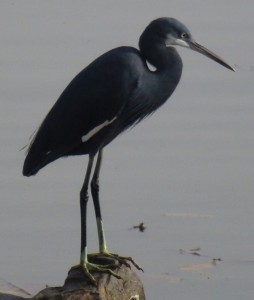 |
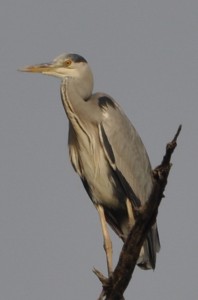 |
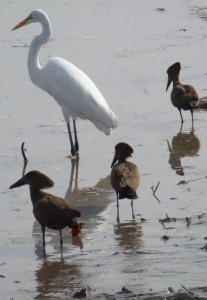 |
We drove back to the river. Though our truck was the second bus in the line, the tiny ferry seems able to take only one bus together with a couple of trucks and cars at a time. We had to wait for the second ferry and crossed the river after 10am. Very inefficient! People however seemed relaxed and went for a drink and snack. I brought a nice boiled lamb shank for CFA1000. The crossing only took about 10 min and we proceeded to the border. We entered Senegal again at Farafenni before 11am.
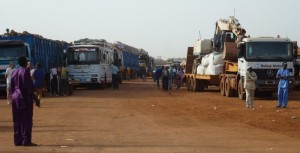 |
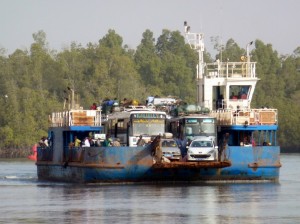 |
Remarks
What have I done in about 60 hours in The Gambia? My knowledge of this smallest nation on the continent remains flimsy! I have only seen a bit of its river bank, spent two nice nights at the Tendaba Camp and two hours on bird watching.
This tiny country is indeed a product of Africa’s colonial past and a political oddity. It is a member of Commonwealth while a significant portion of its population is francophone. I used my CFA in the country!
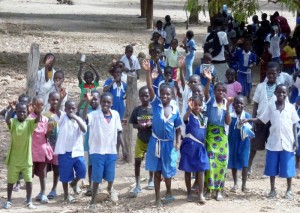 I had one of my best pirogue trips in the Baobolong Wetland Reserve. While it might be a paradise for bird-watching, its tourism infrastructure is under-developed in the area I have visited. Our encounters with the police and immigration staff have been unpleasant. When we entered The Gambia territory, a young man in a singlet jumped onto our truck demanding we show him our passports. He flashed some sort of plastic police card before us. We were skeptical and told him that we would only show our passport as advised by our guides who were clearing our papers at the immigration office. He was irritated. But he left the truck as requested by Ant later while we got our passports out. Then on the way to Tendaba the following day, we were stopped at half a dozen road blocks with a couple of officers stepping into the truck. They all claimed they were around to check things out and protect tourists while having their eyes scanning our belongings in the truck. They often asked silly questions and ended up enquiring whether we had any gifts for them. Their behaviours do not help cultivating a good impression of the country!
I had one of my best pirogue trips in the Baobolong Wetland Reserve. While it might be a paradise for bird-watching, its tourism infrastructure is under-developed in the area I have visited. Our encounters with the police and immigration staff have been unpleasant. When we entered The Gambia territory, a young man in a singlet jumped onto our truck demanding we show him our passports. He flashed some sort of plastic police card before us. We were skeptical and told him that we would only show our passport as advised by our guides who were clearing our papers at the immigration office. He was irritated. But he left the truck as requested by Ant later while we got our passports out. Then on the way to Tendaba the following day, we were stopped at half a dozen road blocks with a couple of officers stepping into the truck. They all claimed they were around to check things out and protect tourists while having their eyes scanning our belongings in the truck. They often asked silly questions and ended up enquiring whether we had any gifts for them. Their behaviours do not help cultivating a good impression of the country!
The Gambia is poor and can benefit enormously from tourism. But the way the police or immigration officers running around and conducting their affairs do not inspire confidence and induce a positive image for its country. I wish the government could reflect on its development strategy and raise the standard of its public service.


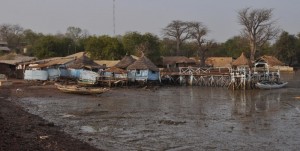
Fascinated to hear this Sarah. I have a work colleague who married a Gambian and runs a charity there. Have never visited this country myself to interested to hear your impressions.